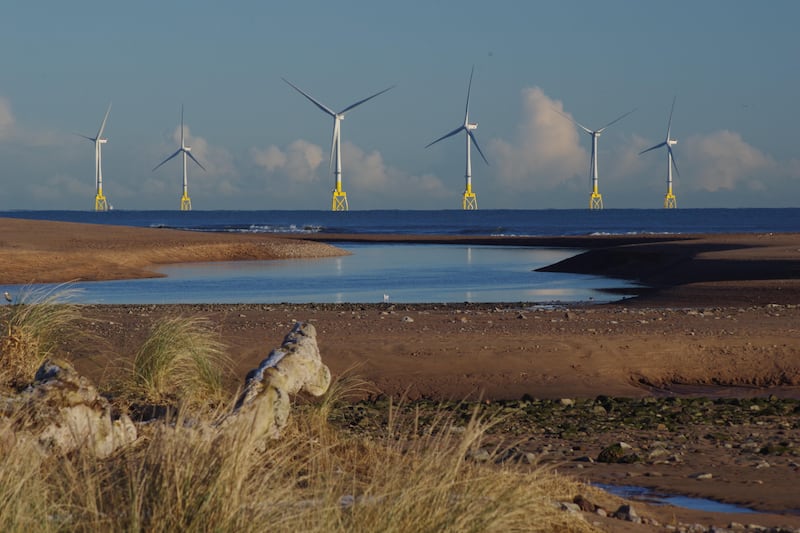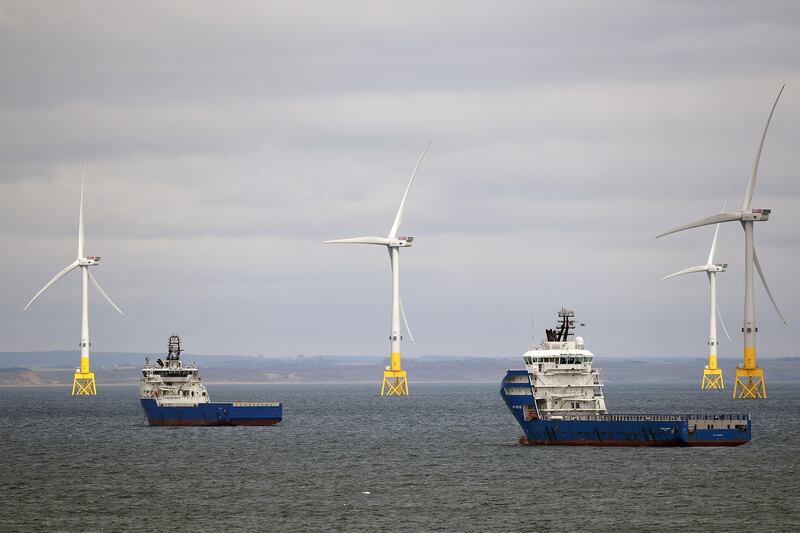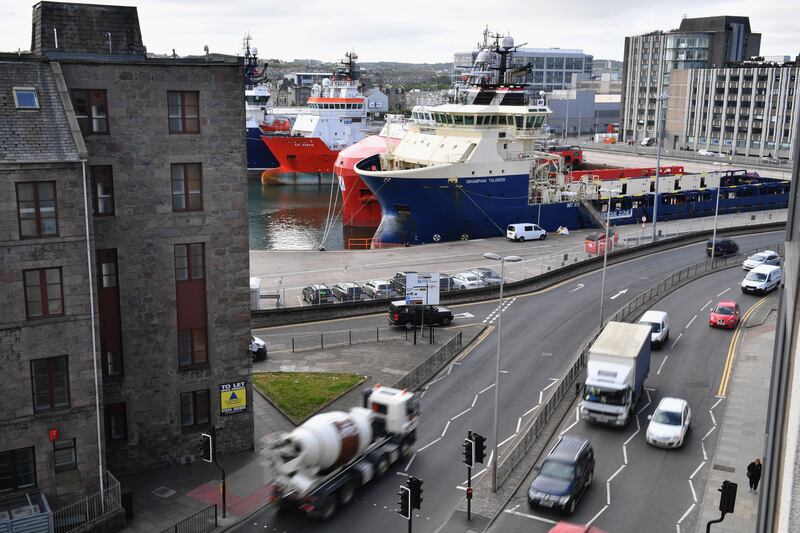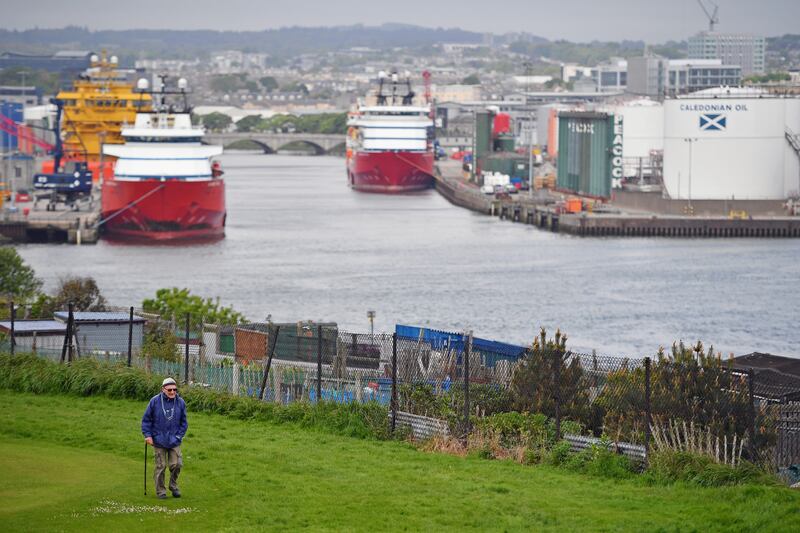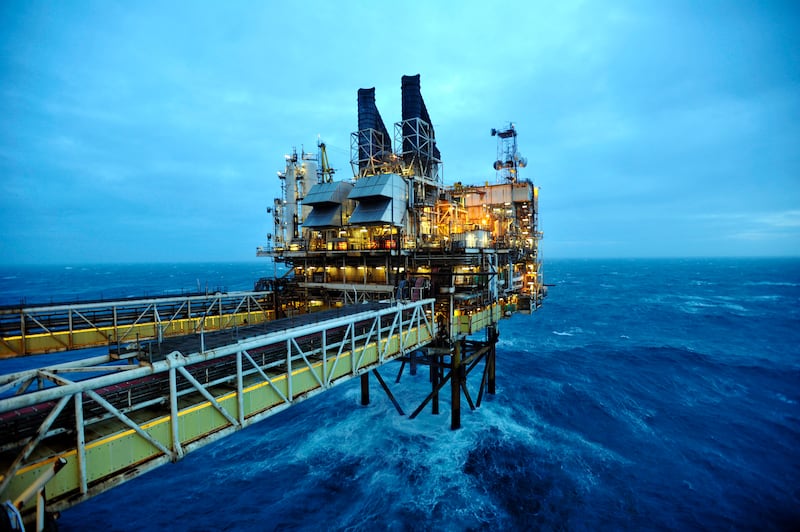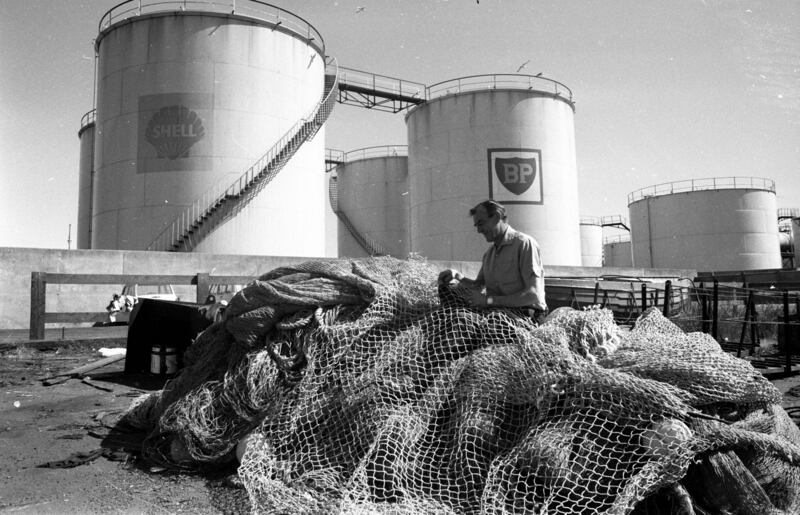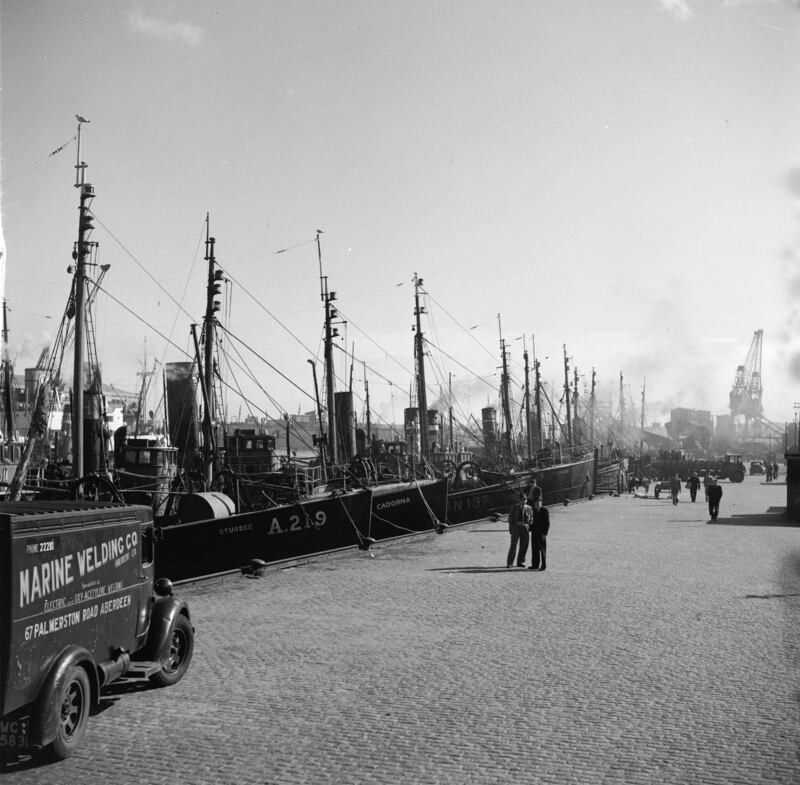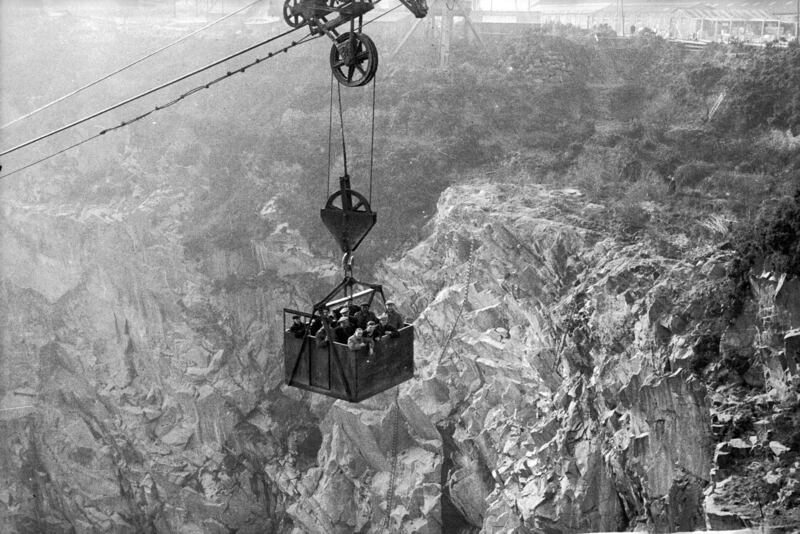For more than 50 years, Aberdeen has been the UK’s centre for oil, creating the nation's highest concentration of millionaires outside of London.
Known as the Granite City, due to its municipal buildings and statues built from the imposing local rock, the north-eastern Scottish port has been at the forefront of many of Britain’s major industries.
It is an evolving city. In the 19th century Aberdeen was the granite capital of the world and by the early 1900s its harbour and fishing fleet were the largest in Britain. Since the discovery of oil off its coastline in the 1960s, it has been the oil capital of Europe.
Now, the energy capital is seeking to swap oil for renewables as it seeks to cement itself as Europe’s champion of green technology – timely, given that the Cop26 climate change summit begins in Scotland next week.
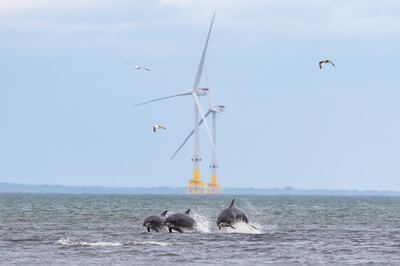
“For more than 50 years, Aberdeen has been a world leader in energy technologies providing a major economic stream,” councillor Ryan Houghton, Aberdeen City Council’s city growth and resources convener, told The National.
“Renewables [are] not new to the city and its industry. We have a track record of attracting investment, leading on deploying climate-friendly actions, including the offshore farm at Aberdeen beach. That transition has been happening anyway as we seek to secure the jobs and expertise that is here. Offshore engineering and the supply chain that is located here is vital to the energy transition.
"Hydrogen is already here, in our buses and our fleet, but we strive to do more. Our city has a huge opportunity to become an exemplar in the energy transition and I look forward to the future and working with public and private sector partner organisations and companies to achieve net zero together.”
As world leaders prepare to meet at the UN climate summit, Cop26, 235 kilometres south-west in Glasgow, Aberdeen is celebrating the latest phase of its green transition as the world’s largest wind farm, Kincardine, becomes fully operational.
Located 15 kilometres off the coast, in depths of up to 80 metres, Kincardine is the largest operating floating wind farm that uses the highest capacity wind turbines to be installed on buoyant platforms.
It will generate more than 200 gigawatt hours of green electricity a year, capable of powering more than 50,000 households.
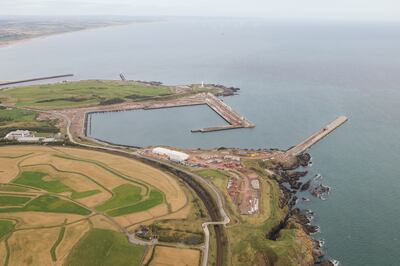
“The Kincardine project shows how boundaries of offshore wind technology are constantly being pushed forward,” said Nils de Baar, president of Vestas Central and Northern Europe.
“We have demonstrated that the world’s most powerful turbines can be installed on floating substructures.
“With appropriate policy and regulations, floating technology offers the UK an opportunity to expand its global leadership position in offshore wind and build further opportunities for the domestic supply chain.”
From the shore, the impressive turbines, masking the brutal battering they take from the unforgiving North Sea, appear to be peacefully guiding the UK towards a future in renewables.
They form the backdrop of the UK’s most ambitious marine infrastructure project to have taken place in the last 75 years – Aberdeen’s £350 million ($480.2m) south harbour expansion project.
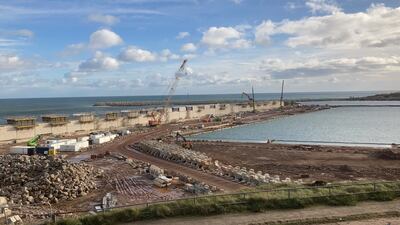
It will result in the city becoming a global centre for all green energy – from hydrogen and wind to decommissioning projects.
The 1.2km-wide quay will have the capacity to host some of the world’s largest vessels and, when it opens next year, create a base for the next generation of renewable technology to be assembled.
“This will form the heart of Aberdeen’s renewables transition,” Luigi Napolitano, Aberdeen harbour’s business and innovation manager, told The National.
“The harbour won’t be tidal. We will be able to house large projects and won’t be dependent on the tide to get vessels in and out.
“We will be able to manage decommissioning projects, assemble wind turbines and work with hydrogen and be at the forefront of the UK’s renewables future. This will be the conduit for local commerce and playing a huge role in the future of offshore wind.
“Aberdeen is already a huge energy supply chain. All the industry leaders are based here and the new port will be the catalyst for them to change and adapt to new types of energy.
“Oil and gas will still play a part in what we do in the years to come and decommissioning will be an important part in our future but we are already making large strides to become an eco-port.
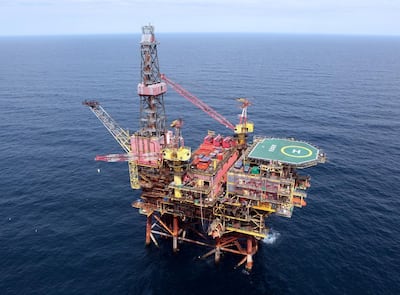
“We are working with all the organisations to work towards the decarbonisation of the marine sector. We are at the forefront of that and as a port, we are trying to be as green as possible. Aberdeen is not just a capital for energy in the UK, it is a capital internationally.”
Aberdeen has shipping connections with more than 25 countries and Mr Napolitano said this is only set to increase with the development.
Abu Dhabi’s Taqa has its logistics office at Aberdeen harbour and is one of many energy companies set to benefit from the expansion.
The Energy Transition Zone (ETZ), a net-zero green space connected to the coastline and adjacent to the new deep-water harbour, was created in April and is expected to directly support 2,500 green jobs by 2030, alongside a further 10,000 transition-related jobs.
ETZ chief executive Maggie McGinlay told The National that Aberdeen’s rich oil heritage makes it the ideal place to lead the renewables industry due to the extensive skills of the city.
“The north-east of Scotland has been a major player through its world class oil and gas industry for the last 50 years and, therefore, has made an invaluable contribution to the UK’s energy industry requirements over that period of time,” she said.
“Now, as this industry matures as it focuses on decarbonisation, we are looking to these new opportunities in net zero and how we can harness all the skills, the talent, the people, the company capabilities that have perhaps grown up on the back of oil and gas and look at how we can apply that to these new areas within energy transition.

“Our purpose is to drive forward the energy transition in Aberdeen and the north-east of Scotland, build on our strength of oil and gas and demonstrate how we can help support that drive to net zero.
“The investment in the harbour enables the offshore wind to become a real driver of the economy for the north-east and the ETZ will provide the infrastructure to support it.
“In Aberdeen, we are really proud to have the world’s first floating wind project. We want to build on that and the reason we think we can is because of the skills we use in oil and gas for offshore production; they are very transferable to floating offshore wind.
“It is about anchors and mooring and is very similar to oil and gas in how we do remote operations, underwater inspections. A lot of the technology and skill sets we deploy in subsea for oil and gas is very transferable to floating wind. We believe that the oil and gas industry can play a key role in floating wind.”
The oil and gas industry employs thousands of people – there are more than 71,000 in Scotland and 40,000 in Aberdeen.
The investment for the ETZ will come from the Scottish Government’s Energy Transition Fund, a five-year financial package that was launched in June 2020 to support the growth and diversification of the oil, gas and energy sectors while helping to attract further private investment.
The fund has already provided funding of £6.5m for a Global Underwater Hub, as well as £4.65m to Aberdeen City Council to expand its hydrogen bus fleet.
The city’s multimillion pound underwater engineering centre is set to reinforce the UK’s status as a global leader in the field and build on expertise in subsea robotics.
The UK already has a 40 per cent share of the global market in underwater engineering and is in prime position to capitalise on the industry, which could be worth more than £100 billion globally by 2035.

Last month, the University of Aberdeen and the Net Zero Technology Centre unveiled a £1.6m immersive simulation suite at the National Decommissioning Centre (NDC) in Aberdeenshire, which is set to transform approaches to offshore decommissioning and renewable energy infrastructure projects in the North Sea.
It will enable industries to undertake detailed offshore marine technology and operational simulations, such as the removal or installation of energy infrastructure, in a safe digital environment.
Its first project is assessing cost-effective techniques for the installation of anchor systems for offshore floating wind turbines.
The NDC is also creating a digital model of the entire North Sea, mapping all the offshore oil and gas, and renewable infrastructure to compile key information such as lifespan, greenhouse gas emissions and power usage.
“We are committed to establishing the NDC as a as a global leader in research and development, building on this region’s strong track record in innovation in industry and the sciences,” said Prof George Boyne, principal of the university.
“This state-of-the art simulation suite is testament to that ambition and to our commitment in promoting economic recovery for our region by working in partnership with industry on projects related to decommissioning and the energy transition.”
Aberdeen’s Maritime Museum overlooks its harbour on the historic Shiprow and charts the city’s hundreds of years of heritage from fishing to oil and to present-day renewable initiatives.
Its fourth floor is dedicated to its green future as it begins its new chapter.
“In the way that we have been seen as the oil and gas capital of Europe, our ambition is now to be seen as the energy capital of Europe,” Ms McGinlay said.
“While this region absolutely built up its knowledge and capability on the back of oil and gas, we are now investing to make sure we are here for the next 50 years in terms of offshore wind, hydrogen and carbon capture, and that Aberdeen will be at the forefront to making a major contribution to net zero.”

